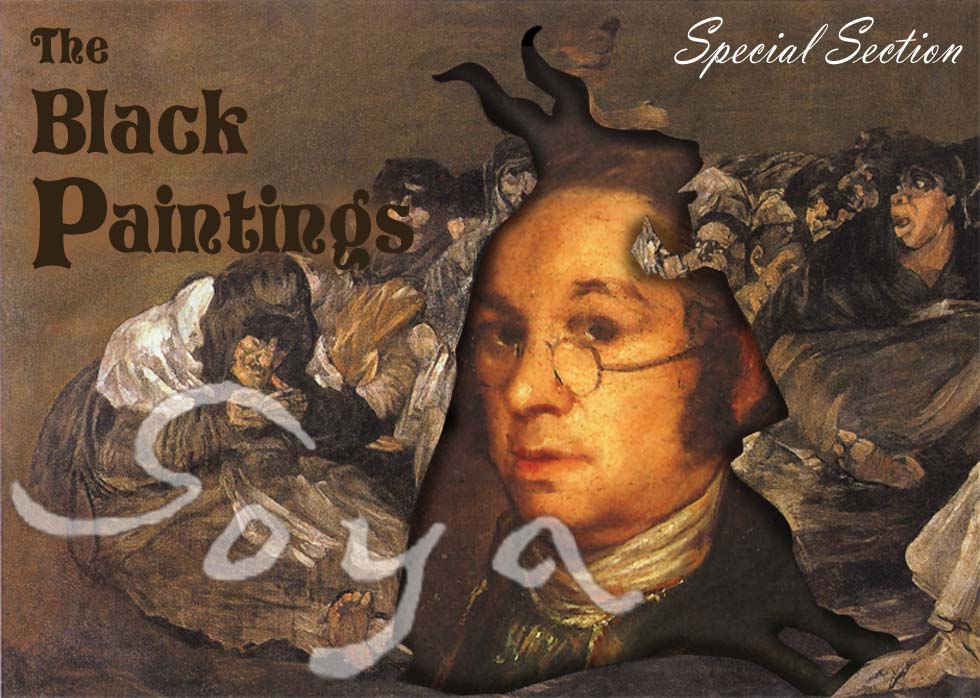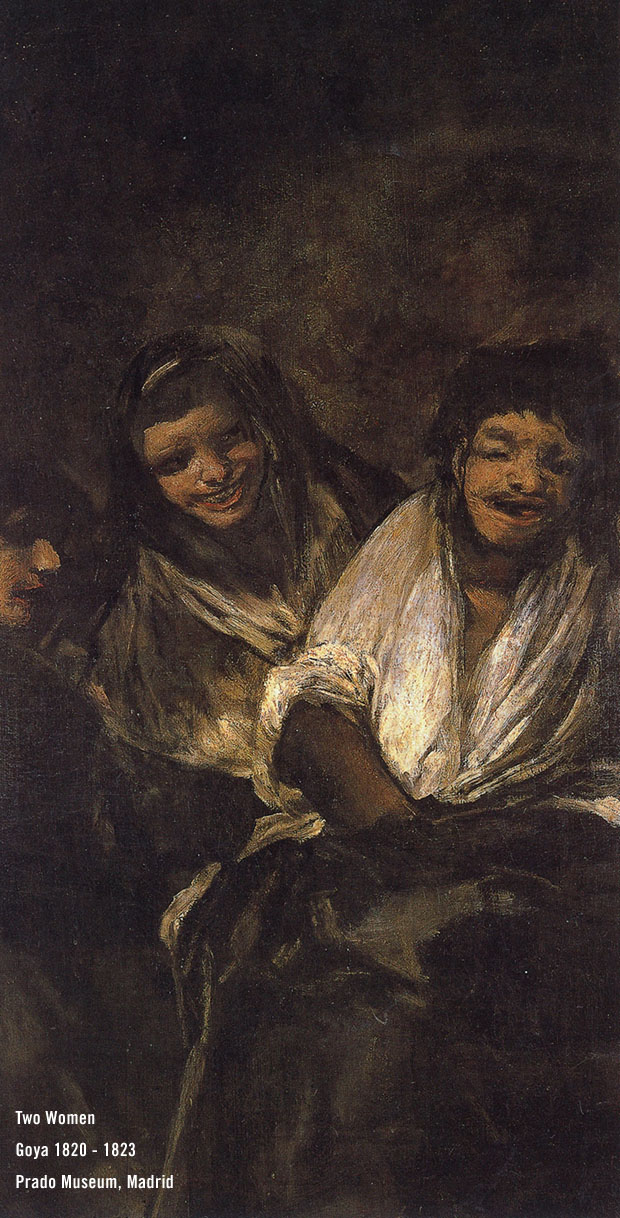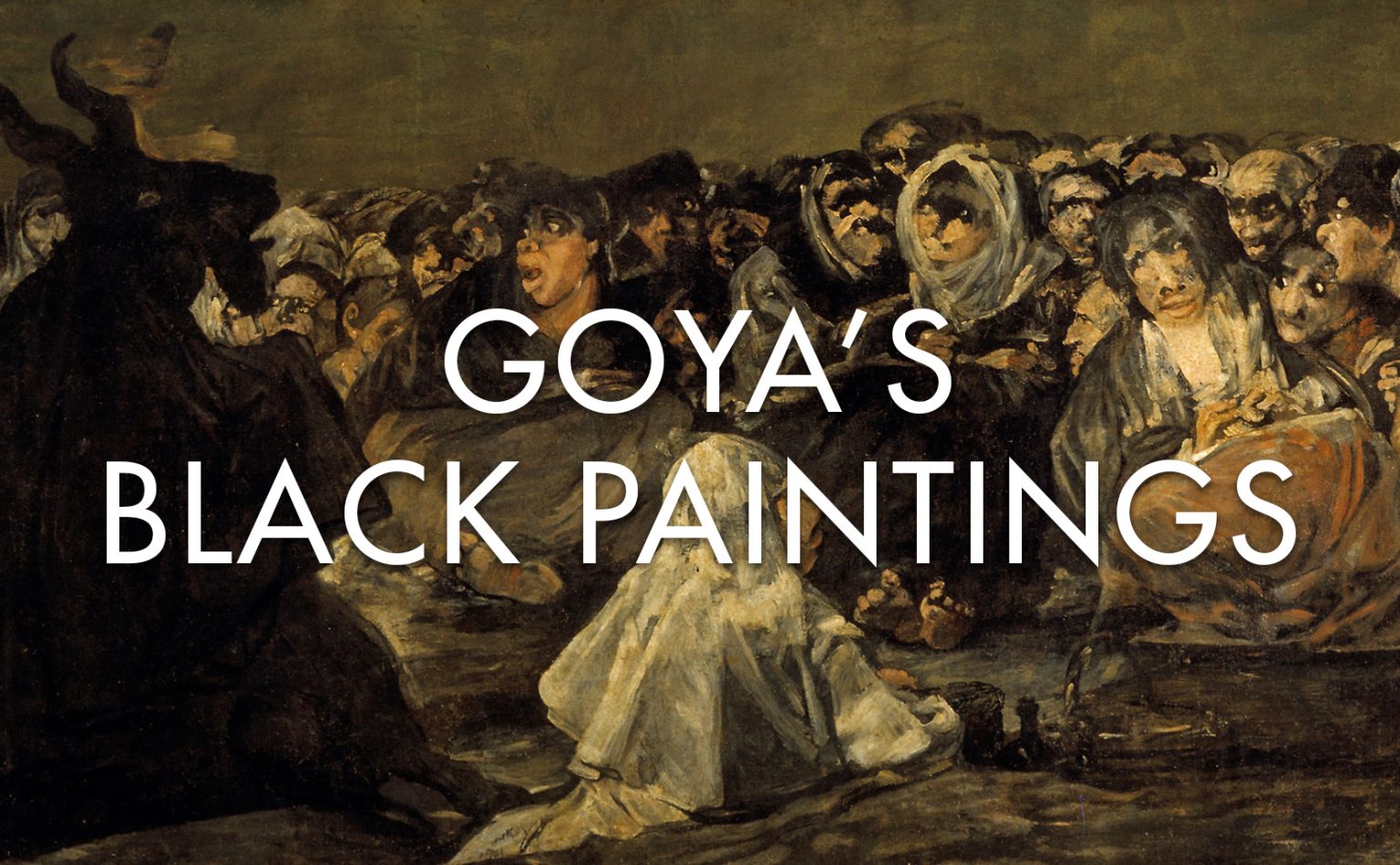
Goya Two Old Men (1823) Dark Paintings, Classic Paintings, Spanish Painters, Spanish Artists
The Mystery and Terror of Francisco Goya's Black Paintings | Widewalls In between 1819 and 1823, the iconic Spanish painter Francisco Goya made his most saluted and rather intimate series called the Black Paintings.

BBC Culture on Instagram “The Bewitched Man Francisco de Goya (1798). Throughout history
Article by Katie Pittman "The Last of the Old Masters and the first of the moderns," Francisco José de Goya y Lucientes was a 19th -century Romantic Spanish painter known for his representation of the everyday contemporary scene and later in life his dark tonal shifts into madness and mental illness (Art in Context).

‘Goya Order and Disorder’ at Museum of Fine Arts, Boston The New York Times
Figure 1: The Black Paintings, like Pilgrimage to the Fountain of San Isidro, stand out because of their dark aesthetic and mysterious context (Goya, 1819-23). The Origins of the Black Paintings. Francisco de Goya bought La Quinta del Sordo in 1819. By then, the painter was deaf and had suffered a number of illnesses, like cholera, leaving him.

MIRADAS Pintura y más
Explore the collection > goya black paintings - Museo Nacional del Prado Explore the collection 36 results Sort by: Images List Gallery RDF Autores Goya y Lucientes, Francisco de (25) Nani, Mariano (2) Sorolla y Bastida, Joaquín (2) Cerezo, Mateo (1) Espinosa, Juan de (1) See all goya black paintings Delete The Pilgrimage to San Isidro

The Mystery and Terror of Francisco Goya's Black Paintings Widewalls
Shop Art.com for the best selection of wall art, canvases, posters, & photo prints online. Create unique & inspiring spaces with trending artwork at Everyday Low Prices.

Francisco GoyaThe Black Paintings YouTube
Francisco Goya was a talented Spanish painter and printmaker, and is considered one of the last of the Old Masters of painting, as well as the first of the moderns. He began his apprenticeship in painting at the age of 14, and his talent was quickly recognized. He first submitted entries to the Royal Academy of Fine Arts in 1763, and then later.

The Conjurers by Francisco Goya Spanish Painters, Spanish Artists, Art And Illustration
Goya's far-reaching legacy extends to Surrealism, as artists looked to Goya's etchings and Black Paintings for their dark and dreamlike subject matter. Salvador Dalí created his own version of the Caprichos in 1973, and more recently, in 2014, the contemporary artist Emily Lombardo did likewise, reimagining the Caprichos in the framework of 21.

Image result for Goya’s Black Paintings Francisco goya, Goya paintings, Art
Francisco José de Goya y Lucientes ( / ˈɡɔɪə /; Spanish: [ f ɾ a n ˈ θ i s k o x o ˈ s e ð e ˈ ɣ o ʝ a i l u ˈ θ j e n t e s]; 30 March 1746 - 16 April 1828) was a Spanish romantic painter and printmaker. He is considered the most important Spanish artist of the late 18th and early 19th centuries. [1]

The Mystery Behind Goya's Terrifying Black Paintings at the Prado in Madrid
Francisco Goya, the most important Spanish artist of late 18th and early 19th centuries, has been crowned by many as the last of the Old Masters and the father of modern art. The enigmatic and dark series, the Black Paintings, are the natural outcome of his life.

Goya and the Black Paintings
Goya enigmatic Black Paintings, especially the black paintings Goya created, stand as a testament to his genius and innovative vision. Learn why.

The 'Black Paintings' By Francisco Goya Are Deeply Disturbing, And No One Knows Why He Painted
Francisco José de Goya y Lucientes (1746-1828) is regarded as the most important Spanish artist of the late eighteenth and early nineteenth centuries. Over the course of his long career, Goya moved from jolly and lighthearted to deeply pessimistic and searching in his paintings, drawings, etchings, and frescoes.

Two Women Goya The Black Paintings
The Black Paintings by Francisco Goya. By the year 1819, the Spanish artist Francisco Goya had experienced many intense situations. He experienced the devastation of war after Napoleon attacked Spain, as well as the upheaval in Spain when its government shifted from a constitutional to an absolute monarchy.

The Time and the Old Women, by Francisco de Goya (18101812) Francisco de goya, Les arts, Art
The Black Paintings (Spanish: Pinturas negras) is the name given to a group of 14 paintings by Francisco Goya from the later years of his life, likely between 1819 and 1823. They portray intense, haunting themes, reflective of both his fear of insanity and his bleak outlook on humanity.

Goya’s Black Paintings
288 A boggle-eyed pagan god feasts on the headless carcass of his own son. A humanoid billy goat in a monkish cassock bleats a satanic sermon to a gasping congregation of witches. A desperately.

Goya's Black Paintings Selfexpressions of a Tormented Mind The Artist
Venerated as the first modern artist, Francisco Goya produced nothing more abrasively modern than the series of 14 images known as the Black Paintings, which a half-century after his death.

Francisco Goya Black Paintings 2 The Eclectic Light Company
Francisco Goya's Creepy Black Paintings Explained. Francisco José de Goya y Lucientes, more often referred to as Francisco de Goya or simply Francisco Goya, is one of the most remarkable figures in the history of Spanish art. Born in the town of Feundetodos on March 30, 1746, the talented young artist studied in both Spain and Italy before.